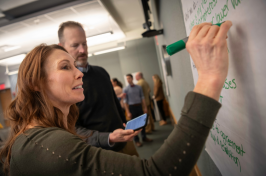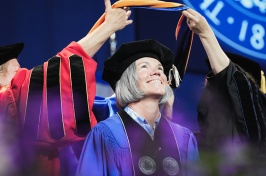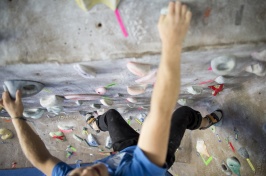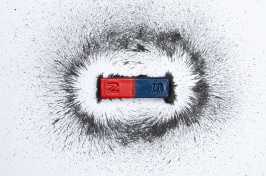
Vanessa Druskat’s new book, "The Emotionally Intelligent Team," translates decades of research into practical tools for leaders seeking greater trust, collaboration, and performance.
In sports, the teams with the most talented players don’t always win the most games, and in the workplace, teams of high performers don’t always produce the best results — but why?
The answer is Team Emotional Intelligence (EI), according to Vanessa Druskat, an associate professor of organizational behavior and management at UNH’s Peter T. Paul College of Business and Economics, who has spent 30 years researching and building high-performing teams.
Druskat defines Team EI as a group’s ability to develop shared behavioral norms that create a productive emotional and social environment, fostering trust, collaboration, and high performance.
Druskat’s new book, “The Emotionally Intelligent Team: Building Collaborative Groups That Outperform the Rest,” offers a framework for fostering collaboration, trust, and long-term performance.
“My hope from the outset was to write a book that would teach people how to build teams,” Druskat says. “Working with so many leaders through executive education, I kept hearing the same thing: ‘There’s nothing else like this out there.’ We don’t teach people how to build teams.”
The Team EI Model
Druskat has spent her career going inside organizations to observe how teams work together under pressure, and these experiences shaped the Team EI Model, which organizes team norms into three core clusters:
- Help One Another Succeed (understand team members, demonstrate caring, address unacceptable behavior)
- Learn and Advance Together (review the team, support expression, build optimism, solve problems proactively)
- Engage Stakeholders (understand team context, build external relationships)
Druskat says belonging — the deep psychological need to feel accepted, known, valued, and supported — is the glue that holds the model together. This need, she explains, evolved from our earliest experiences in human tribes, where inclusion was essential to survival.
“Belonging isn’t just about being treated like you have value; it also means having influence, being part of a group, and helping shape a team’s shared understanding of what’s currently happening inside and outside the team,” Druskat says. “Research consistently shows that we remain super sensitive to social signals of exclusion, irrelevance, or rejection in a group. Even when one teammate treats us this way, it reduces our motivation for teamwork."
The Team EI model took root in Druskat’s first major study following 300 teams at a manufacturing company in North Carolina. Druskat compared high-performing teams with average teams doing identical tasks and found that the highest-performing teams earned the company $9.8 million more per year than average teams, because they had a distinct culture of interaction. They listened more, behaved in ways that inspired trust, and acknowledged one another's contributions.
“It was about the culture of the team, the unwritten rules that governed how members interacted,” she says. “My colleagues and I labelled these team norms, a sociological term used to define standard patterns of behavior in groups. We found that the norms a team adopted to coordinate and regularize how the team operated significantly differentiated high-performing and average-performing teams.”
In another study, Druskat worked with a senior leadership team at a Swiss company made up of high-achieving individuals who couldn’t function as a cohesive unit. During a strategy meeting, she observed a team member arrive late while on a call, prompting a sharp comment from a colleague and eye-rolls from others as tensions quickly rose.
Despite their intelligence and experience, the team struggled because they lacked shared norms for accountability, respect, and emotional safety, Druskat says.
With teams like this, Druskat uses a survey that helps teams assess which Team EI norms they’re already practicing and where they’re falling short. From there, she facilitates a series of conversations and reflection activities designed to help the team recognize their behavioral patterns, strengthen emotional safety, and rebuild a culture of trust and collaboration.
From Researcher to Recognized Expert
 As Druskat continued to observe and work with teams within organizations, her reputation continued to grow. In 2001, she co-authored the Harvard Business Review article "Building the Emotional Intelligence of Groups," which brought the concept of team emotional intelligence into the business mainstream. Since then, she has published widely on team effectiveness, emotional intelligence, and group dynamics in multiple journals.
As Druskat continued to observe and work with teams within organizations, her reputation continued to grow. In 2001, she co-authored the Harvard Business Review article "Building the Emotional Intelligence of Groups," which brought the concept of team emotional intelligence into the business mainstream. Since then, she has published widely on team effectiveness, emotional intelligence, and group dynamics in multiple journals.
Her research drew the attention of organizations across sectors — from hospitals and pharmaceutical firms to global corporations — who have invited her to help turn struggling teams into high-performing ones.
Yet despite her growing reputation, Druskat initially resisted writing a book.
“In academia, we’re trained to focus on what we don’t know,” she says. “It took me years to accept that I knew more than most people in the room and needed to share my knowledge more widely.”
Recognizing that most leaders lack access to a team-building expert, Druskat wrote the book to provide concrete, actionable tools that anyone can use to foster emotional intelligence and belonging within their teams. She also hopes it sparks continued research.
“We’re much closer to knowing how to build teams that perform well and enable team members to continually learn and thrive, but the world changes. I fully expect someone to revise our Team EI model,” Druskat says. "Everything’s a moving target, especially now with the rise of hybrid teams. Each of the norms could be refined or expanded.”
When Druskat presented the Team EI Model at a keynote address at a conference at Rutgers University in May, she met doctoral students from Montreal and Japan who had attended the conference to meet with her and discuss using the model for their doctoral dissertation research. The student from Japan will translate the Team EI Survey into Japanese for his research.
“This is exactly what I hoped my book would do,” says Druskat, “Attract the attention of young researchers who understand the relevance of collaborative teamwork in the world today and want to advance what my colleagues and I have learned so far.”
-
Written By:
Aaron Sanborn | UNH Paul College & CHHS | aaron.sanborn@unh.edu

















































